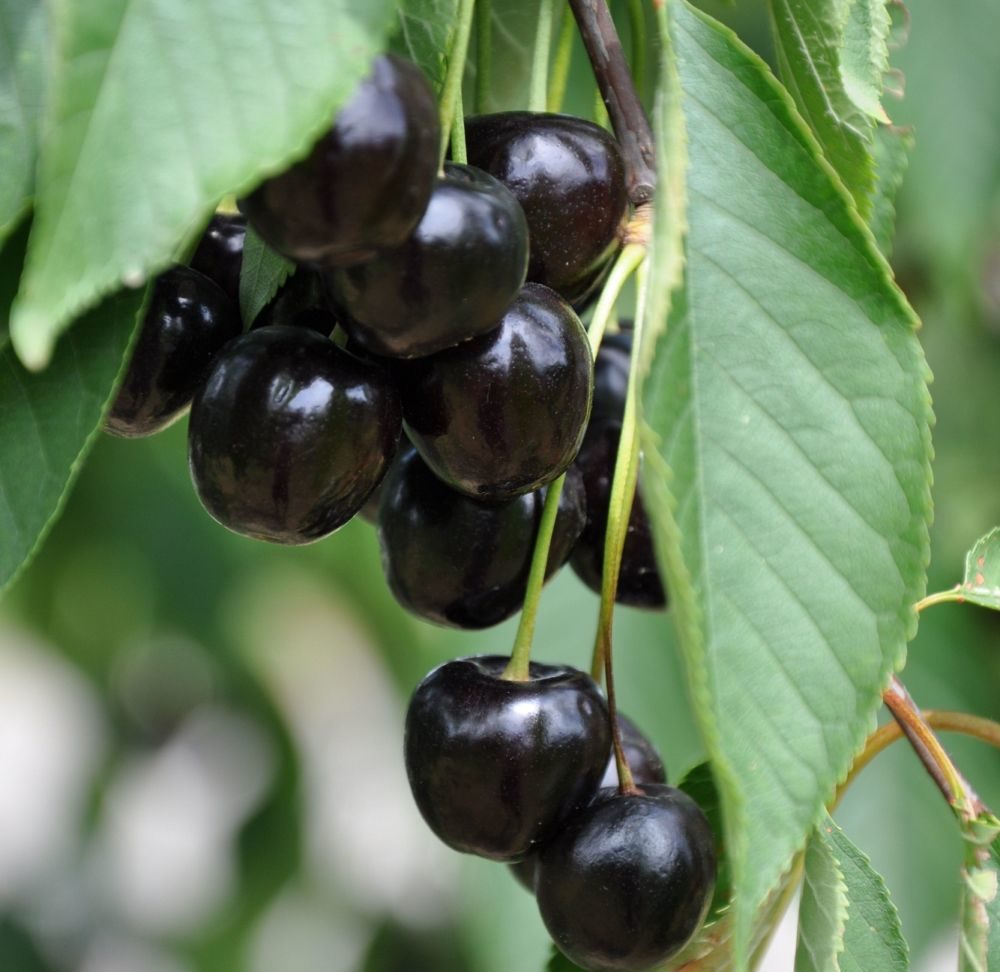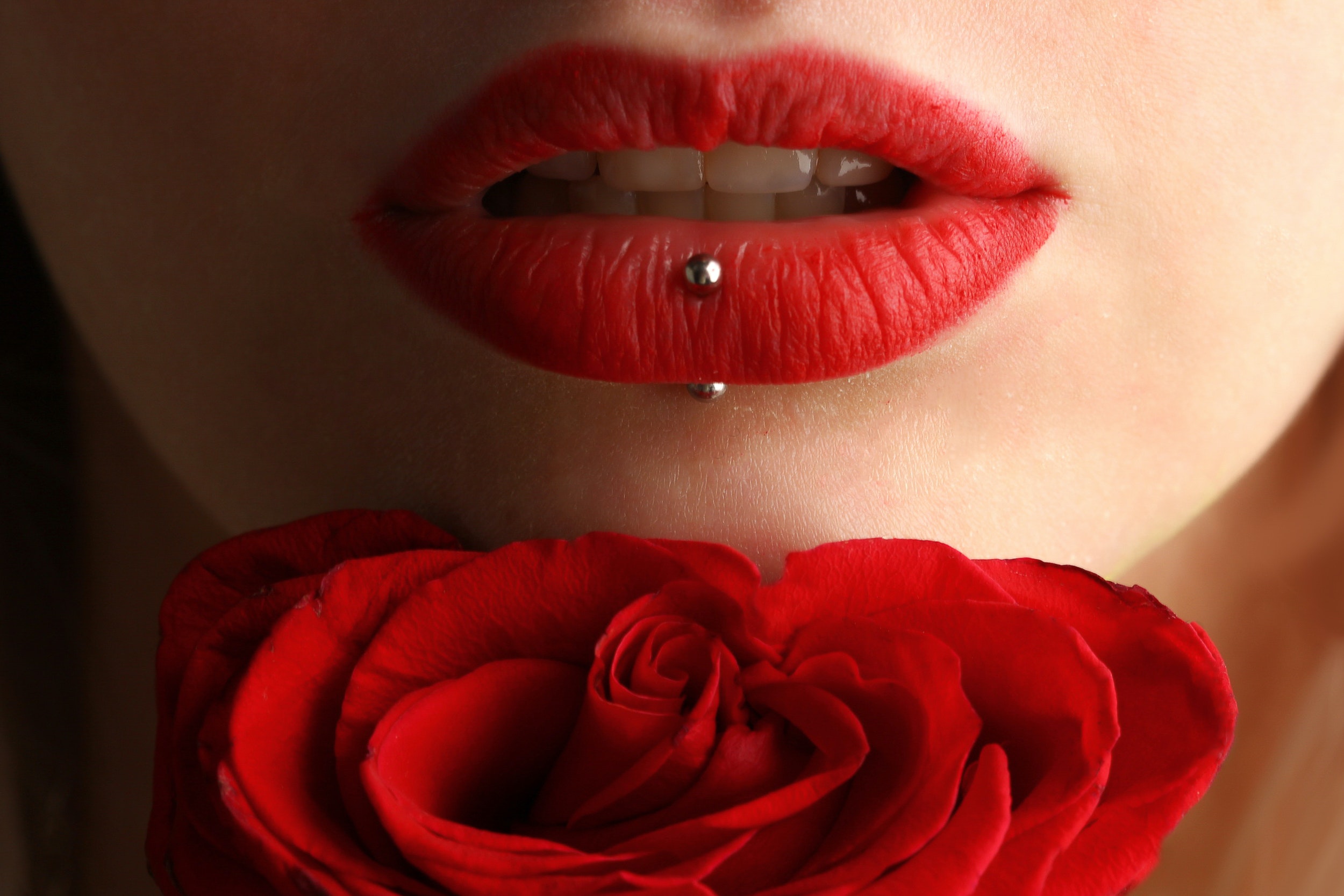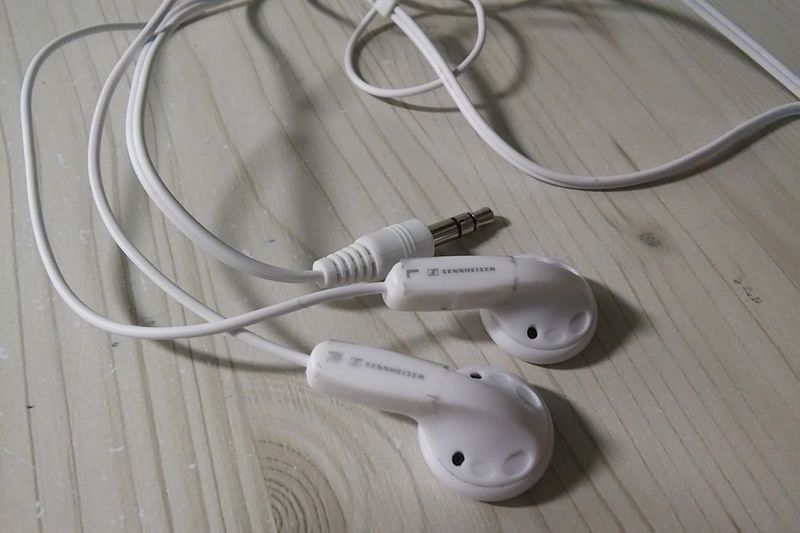Rating of the best varieties of cherries for 2025
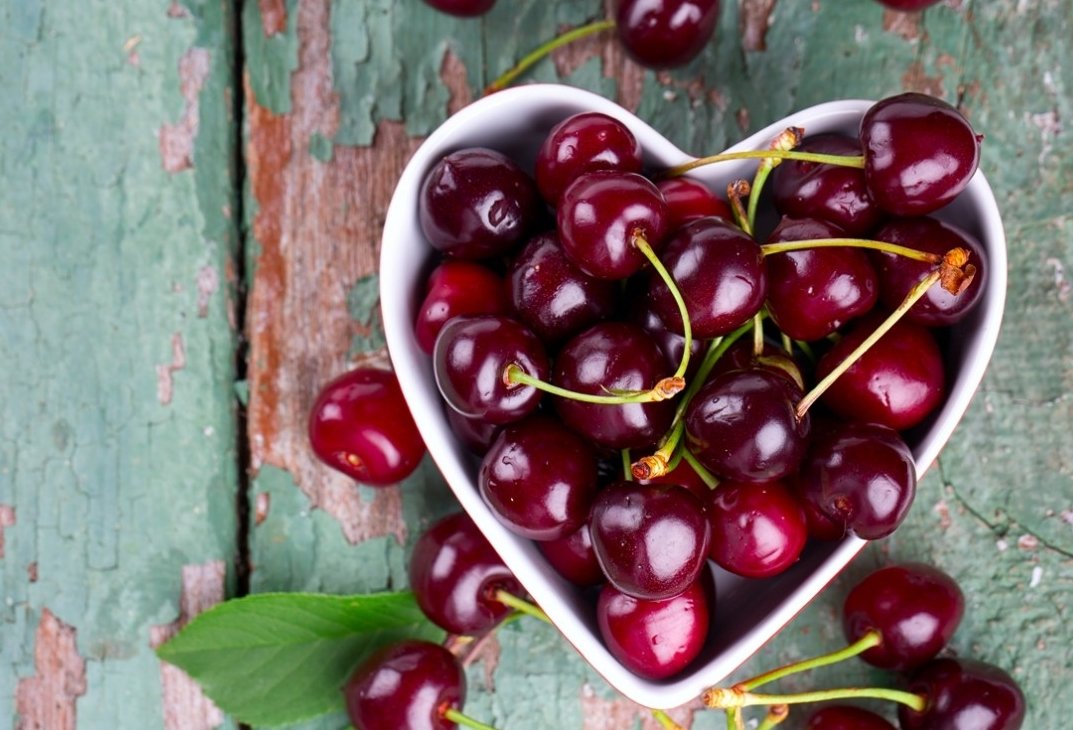
Everyone loves cherries, I guess. Therefore, many people want to grow it in their own area. In addition, there are many varieties that give a stable harvest even in the conditions of a short Ural summer.
Content [Hide]
How to choose seedlings
To get started, study which varieties are recommended for growing in a particular region (you can online, on the website of the Federal State Budgetary Institution "Gossortkomissiya" or on nursery websites). A lot of information can be found on the thematic forums.
Cherry is thermophilic, and if you are going to plant it in the Urals, for example, then the variety must be resistant to frost, temperature extremes, diseases, and flowering should occur late in order to prevent damage to the color by late frosts. Before buying seedlings, look at the opinions of experienced gardeners on the forums.
It is also worthwhile to find out in advance information about the pollinator varieties that need to be planted on the site so that the sweet cherry begins to bear fruit. The opinion that cherries can act as a pollinator is not entirely wrong. As a result of such crossing, duke hybrids can be obtained, which can even produce single fruits. But abundant fruiting from such hybrids cannot be expected. Plus, the timing of flowering cherries and sweet cherries may not coincide.
Buying seedlings in spontaneous markets is not the best idea, as well as taking seed material in supermarkets. In the first case, it is impossible to guess which variety was obtained. In the second, there is a high risk of damage to the root system due to improper storage.
It is better to take one-year-old trees - there will be more chances that a young plant will take root. When choosing, pay attention to the condition of the bark (without traces of sunburn, mechanical damage), roots, the presence of live buds. But the leaves (at least according to GOST, applied to cherry and cherry seedlings) should not be on the plant.
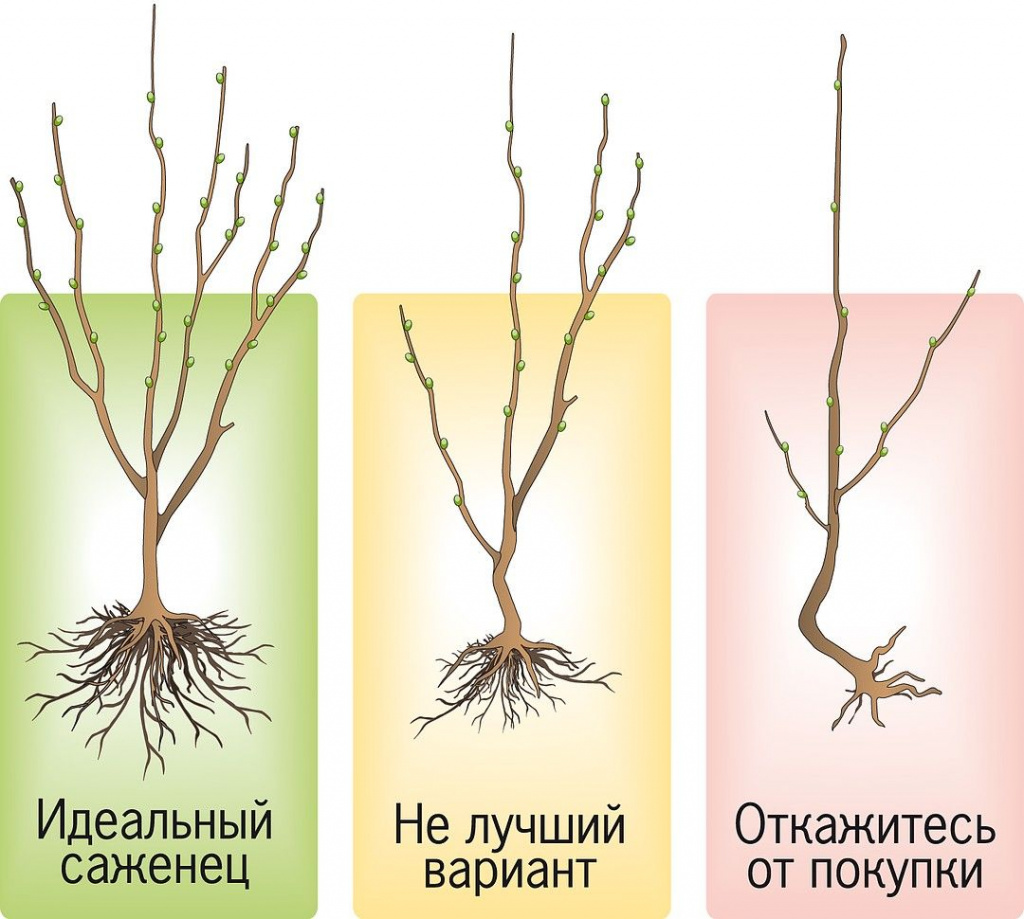
Then inspect the roots and shoots. They must be elastic, "alive", without traces of mold and rot. If, when trying to bend a branch, a crunch is heard, the bark peels off or gathers into an accordion - the seedling is overdried. To check the root system, just try to roll a small length and thickness of the root into a ring. If it worked out, the plant was stored correctly, if part of the root remained in the hands, it is better not to take such a seedling.
The trunk should not be perfectly straight, there should be a slight curvature 10-15 cm from the horse's neck. If not, then it is highly likely that this is a seedling, and not a varietal seedling, which will greatly differ in yield, frost resistance from the indicators stated in the description of the originator.
The age of a seedling can be determined by its length. One-year-old cherries are usually one and a half meters long, with a branched root system. If the height of the plant is greater, it is not worth taking it. It is impossible to dig a 2-3 year old tree out of the ground without damaging the roots - such a cherry does not take root well. If you order seedlings online, look in the variety description:
- for which climatic zones it is suitable;
- disease resistance, frost resistance indicators (including secondary spring frosts);
- terms of the first fruiting, productivity;
- the purpose of the fruit (for sweet cherries in most cases - dessert);
- how the berries tolerate transportation, how easily the stone is separated from the pulp (if you are going to put the fruits into processing).
It is also worth studying reviews about the work of the online store. How often do they send re-sorting, the opinion of users about the quality of seed material, delivery times, and the same packaging.
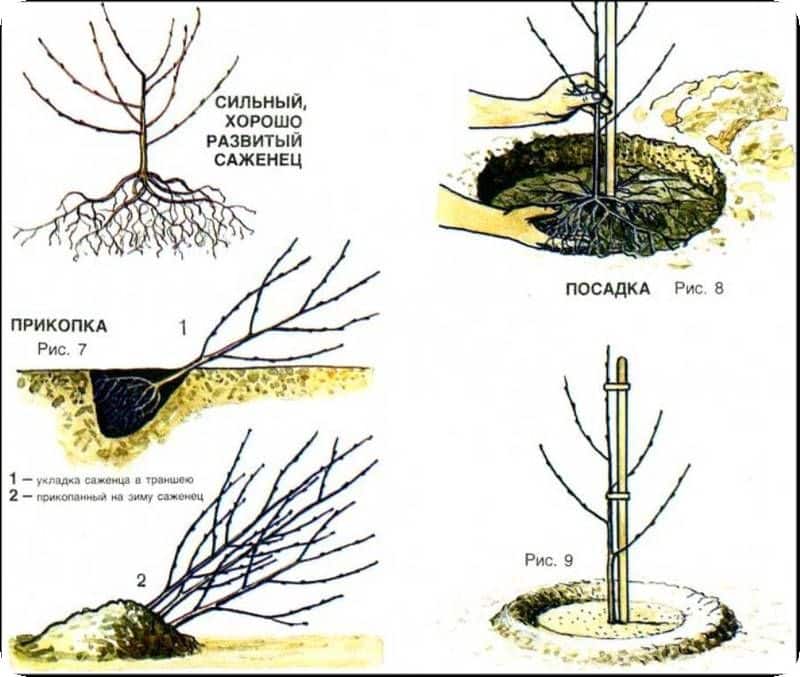
How to plant
Usually cherry seedlings are bought in autumn. To keep the trees until spring, they are dug in. For digging, a pit is prepared with a 45-degree inclined wall. A seedling is laid on this wall so that the crown is located above the ground. After the roots need to be covered with earth, the soil should be well compacted so that there are no voids between the roots (in winter this can lead to freezing), water abundantly. From above close with fir spruce branches, put the bait from rodents.
In the spring, it remains to plant the seedling in a permanent place, preferably in a bright area closed from the winds. The distance between the trees should be at least 5 meters. And, yes, sweet cherries hate weeds, so weeding should be regular.
Rating of the best varieties of cherries for 2025
For the middle band
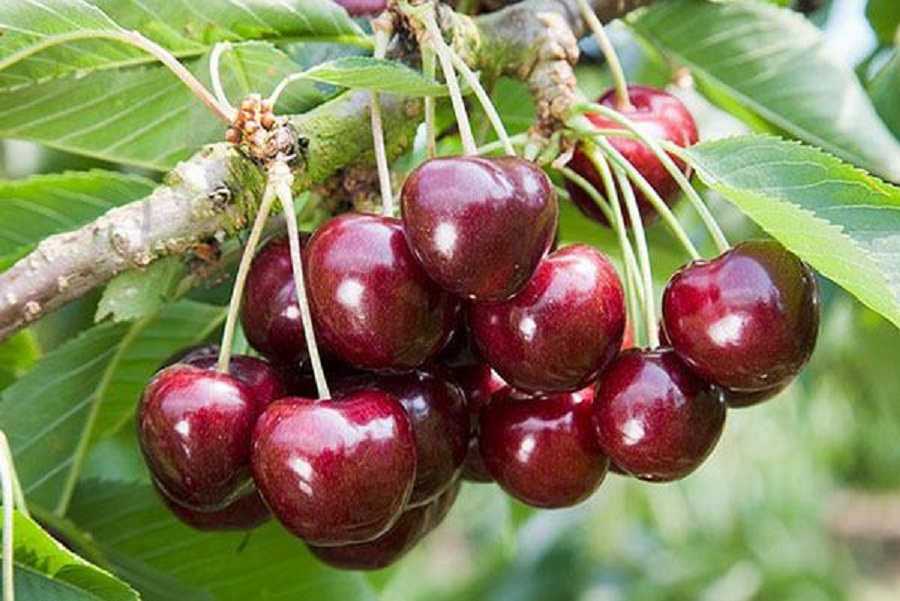
Odrinka
votes 0
An adult tree is compact, low (usually not higher than 3.5 m) with a pyramidal crown, self-fertile - pollinators are needed (Revna, Ovstuzhenka are considered the best varieties). The variety is resistant to fungal diseases, short-term drought, and is almost not damaged by rodents. It gives the first fruits for 5 years.
The berries are medium-sized, but juicy and sweet, with dark red dense pulp, on short petioles. Suitable for processing, freezing. They tolerate transportation well.
Odrinka withstands frosts down to -28 degrees, but things are worse with return spring frosts. When the temperature drops to + 5, it actively loses color, which, of course, affects the yield.
Price - from 1100 rubles for a two-year-old seedling.
- frost resistance;
- unpretentiousness (does not need to be formed, easily tolerates temperature changes, will calmly survive a short-term drought);
- stable fruiting (the number of berries from a bush depends on the weather, but you won’t be left without cherries at all).
- no, it's a great variety for beginners.
Veda
votes 0
It grows quickly, four-year-old trees reach up to 2.5 m in height. Fruiting occurs at 4-5 years (depending on growing conditions). The variety is demanding on the composition of the soil, does not tolerate stagnant water, so it is better not to plant it in the lowlands. The soil in such areas dries out for a long time, which is fraught with roots - they can rot. Dislikes sandy and clay soil.
The berries are dark, burgundy-red, regular wide-heart-shaped, with a thin skin (does not crack with an excess of moisture in rainy summers) and juicy, burgundy-red flesh. The taste is sweet, with a barely perceptible sourness.
Veda is highly frost-resistant. Even after severe frosts, up to 80% of flower buds are preserved.In areas with snowy winters, it hibernates without shelter, if there is little snow, it is better to play it safe and “warm”. An adult tree tolerates drought relatively easily, but young seedlings need regular watering.
Price - 350 - 680 rubles (depending on age, packaging).
- yield - with good care, you can get up to 35 kg of berries from a tree;
- disease resistance;
- spherical, spreading crown - it will be easier to harvest;
- good taste of berries.
- demanding on the soil;
- good drainage is needed.
and the way
votes 0
Quite an old variety, late ripening. It is highly resistant to pests and diseases. It tolerates temperature changes well. Gives the first berries for 5 years. Pollinating varieties - Bryansk pink, Tyutchevka.
The yield is average - about 20 kg per tree, with good care (and if the weather allows) you can take twice as much. The berries are dark, maroon, sweet and sour, with dense pulp. Not suitable for transportation - the skin bursts.
Price - 470-1800 (if taken in a nursery) rubles.
- growing fast;
- not demanding to care;
- gives a stable harvest.
- berries do not tolerate transportation well, the skin can burst even in rainy summers.
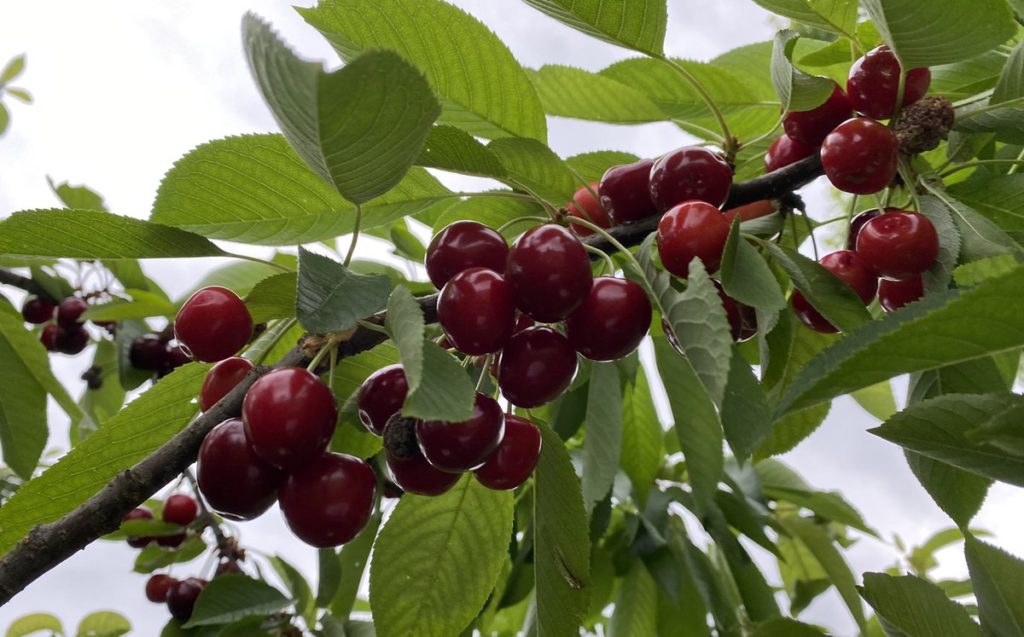
Tyutchevka
votes 0
Good, medium late variety. The tree is spreading, with a spherical crown and thick shoots with olive smooth bark. It almost does not need shaping and pruning, except for the preventive removal of damaged, frozen branches. Another plus is that the variety is self-fertile, however, when planted on the site of pollinating plants (Bryanochka, Lena, Raditsa), the yield will be higher.
The berries are tasty, with a pronounced aroma, quite large, with dense pulp and skin resistant to damage. Well separated from the stalk, perfectly tolerate transportation.True, when waterlogged, they can crack. For example, if the fruit ripening period coincides with frequent rains.
Price - 650 rubles for a two-year-old, 1500 rubles for a four-year-old from a nursery.
- taste and aroma;
- self-fertility;
- resistance to fungal diseases;
- no need for shaping pruning;
- transportability of berries.
- yield is largely dependent on weather conditions.
For Siberia and the Urals
Growing cherries in the Ural climate is difficult, but possible. Choose areas with deep groundwater (stagnation of moisture will lead to rotting of the roots), light fertile sandy loamy soil.
Pruning is needed, and regular - both to limit the strength of growth, and so that the branches can be bent to the ground without problems in order to “warm” with snow. Plus, proper pruning speeds up fruiting.
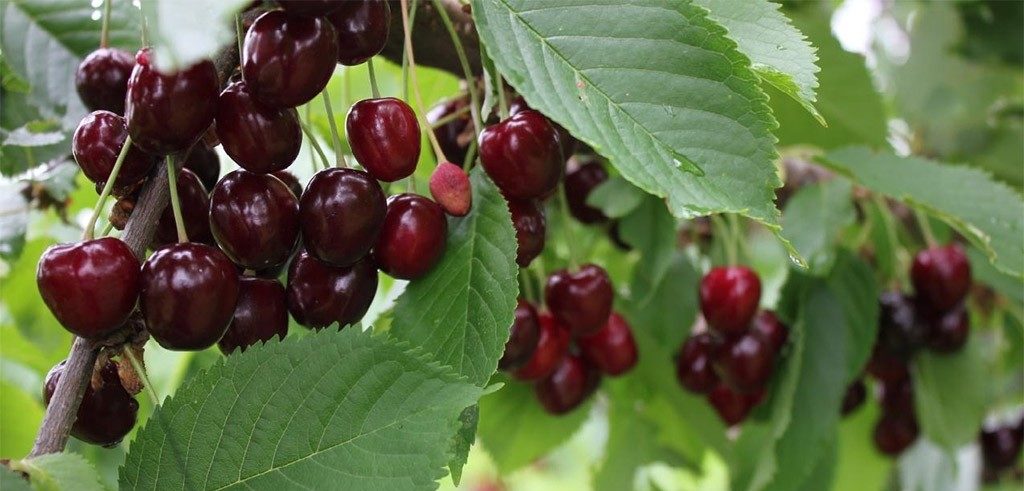
Revna
votes 0
Medium-late variety, partially self-fertile. True, during self-pollination, only 5% of the ovaries will form into berries, so you can’t do without pollinators.
Winter hardiness is above average, resistance to drought and disease is good. The berries are large, with a dense, almost black skin, not prone to cracking with an excess of moisture. The separation is dry, the transportability is high - it is quite possible to grow it for sale.
Revna begins to bear fruit at the age of 6. Flowering occurs in mid-May, when the risk of late frost has passed. The first berries ripen at the end of June.
Price in rubles - 650 (two years) - 1500 (four years).
- frost resistance;
- not afraid of diseases and pests;
- high yield.
- The first harvest gives only after 6 years.
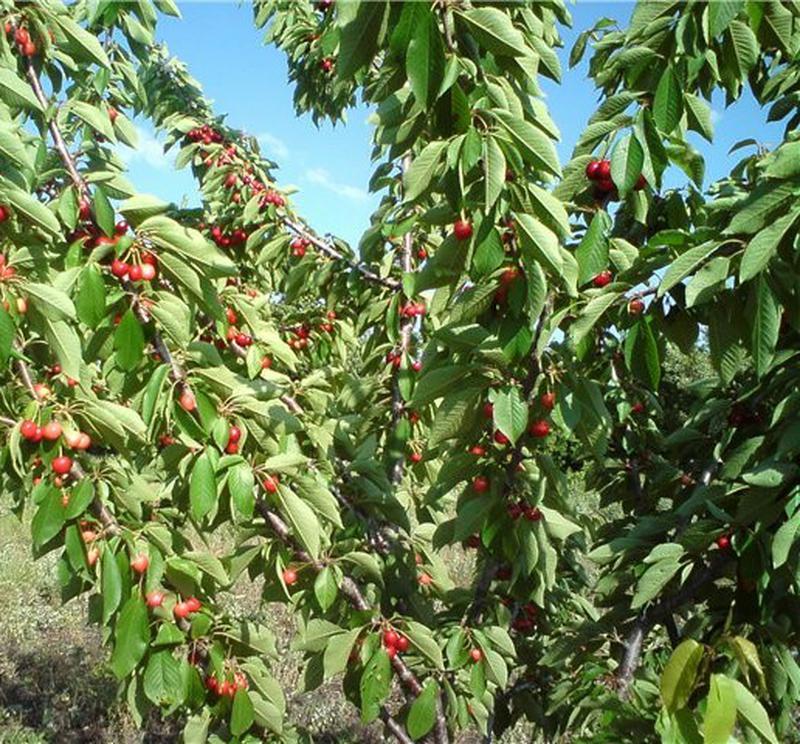
Ovstudenka
votes 0
Compact (no more than 4 m in height without pruning), with a rounded crown, partially self-fertile. The best pollinating varieties are Revna, Raditsa. It will be possible to taste the first own sweet cherry already for the 4th year.
Winter hardiness is good - an adult Ovstuzhenka can withstand frosts down to -27 degrees. But it is better to cover young seedlings with any non-woven material, you should not forget about protection from rodents either.
The first berries ripen by mid-June, mass ripening occurs at the end of June-beginning of July. The fruits are large, juicy, with a slight sourness and a characteristic aroma. Suitable for recycling, not damaged during transportation.
Price - 1050 rubles.
- precociousness;
- high resistance to fungal diseases;
- stable yield.
- no.
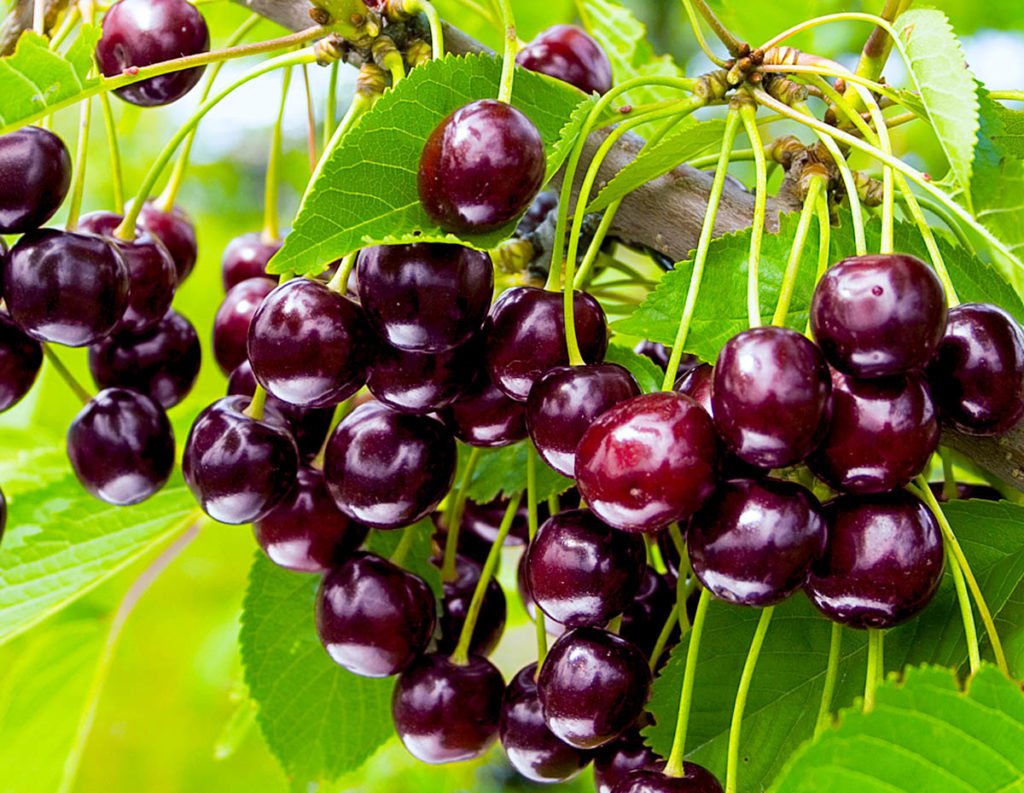
Brianochka
votes 0
Late variety, self-fertile. The tree is medium-sized, with a pyramidal, not prone to thickening crown. Resistant to both frost and disease. Like most varieties of cherries, it does not tolerate stagnant water.
It begins to bear fruit at the age of 5, gives a consistently high yield. The berries are sweet, large with dense dark red pulp and small (only 7% of the fruit volume) seeds.
For planting, it is better to take one-year-old seedlings that take root faster. The place for cherries should be well lit, protected from the winds. Care for young trees is standard - pruning, regular watering, treatment with fungicides from pests.
Price - 480 (one-year-olds in a cardboard tube, in large retail chains), 1050 rubles (two-year-olds from the nursery).
- adapted to the climatic conditions of the Urals and Siberia;
- high resistance of wood, shoots to frost;
- productivity;
- taste qualities of berries.
- no - the variety is rarely affected by diseases; with proper care, seedlings take root easily.
For the Chernozem region
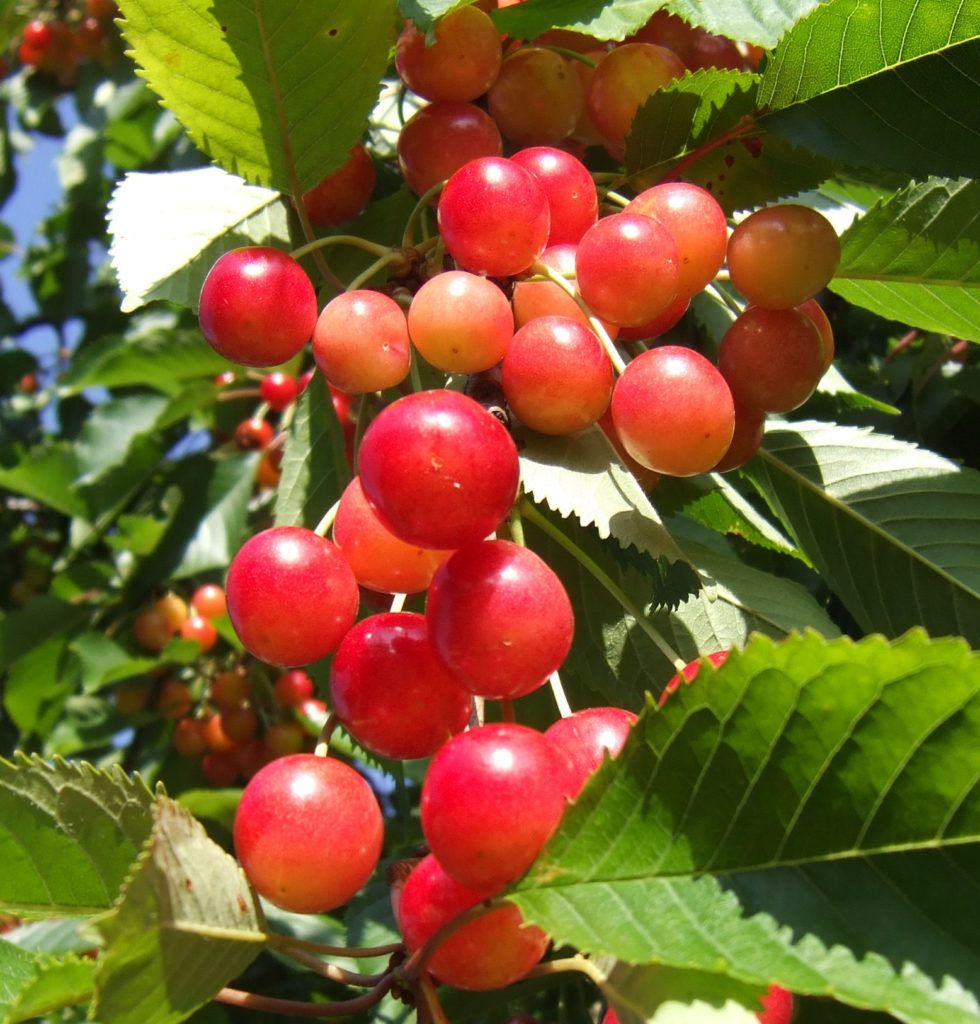
early pink
votes 0
Frost-resistant variety (even flower stalks withstand frosts down to -3 degrees), little damaged by pests, semi-self-fertile. The tree is medium-sized, 10-year-old sweet cherry rarely exceeds 4 m in height. The crown is dense, rounded, with well-foliated straight shoots.
Berries of medium size, with yellow skin with a bright blush, resistant to cracking when waterlogged. The taste is sweet and sour, directly depends on the amount of sunlight during ripening (in the depths of the crown, the fruits ripen slowly, and their taste is fresh, without sweetness). Cherry does not tolerate transportation due to too tender pulp - the berries are crumpled. But on the other hand, when overripe, it does not crumble, it becomes sweet, acquires a characteristic cherry aroma.
The yield is good - up to 40 kg of berries per tree. In the first years of fruiting, it gives up to 27 kg.
Price - from 427 rubles.
- early fertility - gives the first berries already for 4 years;
- productivity;
- berries do not crumble;
- practically not susceptible to fungal diseases.
- formative pruning is needed against thickening of the crown (tolerates well, even radical);
- the taste of berries depends on the weather - lucky with the sun, there will be delicious cherries, no - watery;
- uneven maturation.
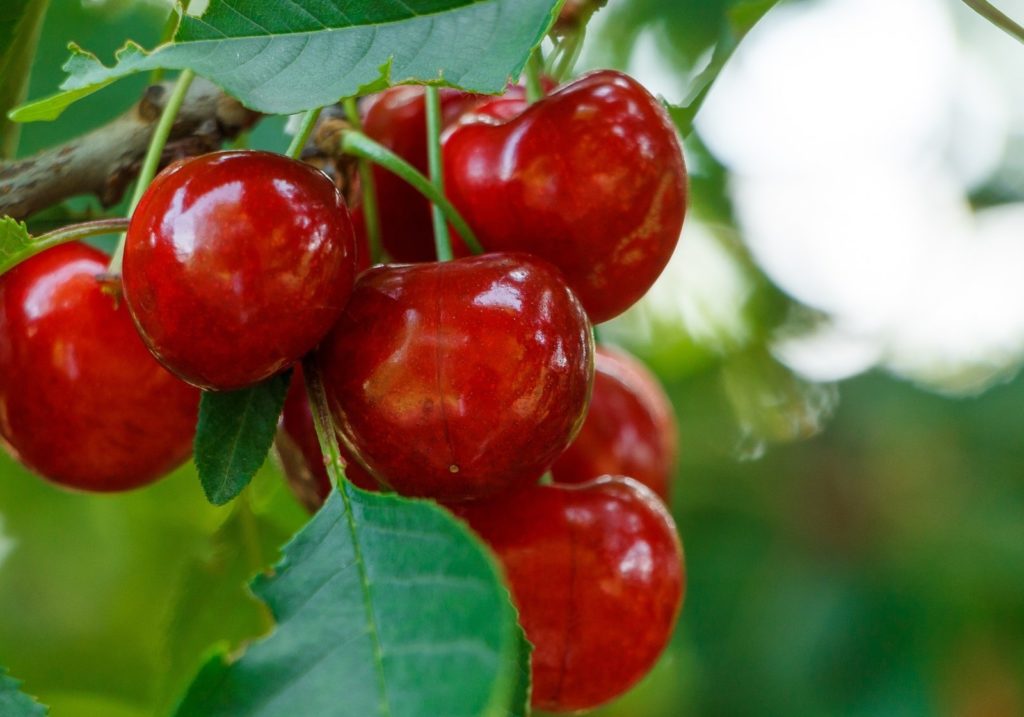
Ariadne
votes 0
Self-fertile (conditionally, pollinating varieties will still have to be planted), an early ripe variety. The seedling grows into a tall tree with a pyramidal crown. Fruiting begins at 3 years of age.
The variety tolerates frost well, like all cherries does not tolerate stagnant water, so it is better to plant it in high areas.It is almost not affected by pests and diseases, therefore it almost does not need insecticidal treatment.
Yields are consistently good. Medium sized fruits with dark red skin, sweet. Suitable for transportation and processing.
Price - 500 rubles for a one-year-old seedling.
- disease resistance;
- early maturation;
- early fertility.
- no.
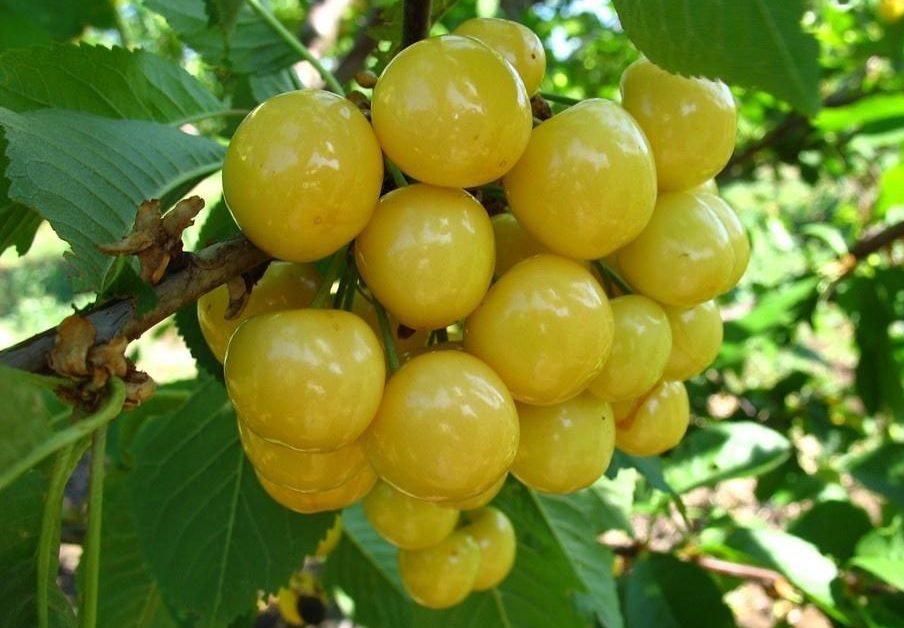
Baby
votes 0
Medium-sized early variety. An adult tree is low, with a pyramidal, medium thickened crown, it does not need regular shaping pruning. Disease resistance is average, so it is better to inspect the bark and leaves often for damage. Winter hardiness is good, but in winters with little snow, protection is recommended (the same spruce branches, non-woven material).
The first fruits appear already in the third year. Berries of medium size, with yellow skin, creamy yellow fragrant pulp, clear juice. The separation is semi-dry. Transportability is good.
The taste of cherries is sweet, with a subtle sourness. The fruits are excellent for processing.
Price - from 480 rubles for a one-year-old seedling.
- early friendly ripening - the fruits ripen by the end of June;
- taste and aroma of fruits;
- low tree height.
- need regular preventive treatment for coccomycosis (manifested by small red spots on the leaves).
It should be borne in mind that sweet cherries are still much more picky than cherries. You will have to tinker to get the first long-awaited harvest. But according to user reviews, their berries of any variety, in taste and aroma, are much superior to purchased ones. So the hard work usually pays off.
new entries
Categories
Useful
Popular Articles
-

Top ranking of the best and cheapest scooters up to 50cc in 2025
Views: 131649 -

Rating of the best soundproofing materials for an apartment in 2025
Views: 127688 -

Rating of cheap analogues of expensive medicines for flu and colds for 2025
Views: 124517 -

The best men's sneakers in 2025
Views: 124031 -

The Best Complex Vitamins in 2025
Views: 121938 -

Top ranking of the best smartwatches 2025 - price-quality ratio
Views: 114978 -

The best paint for gray hair - top rating 2025
Views: 113393 -

Ranking of the best wood paints for interior work in 2025
Views: 110318 -

Rating of the best spinning reels in 2025
Views: 105327 -

Ranking of the best sex dolls for men for 2025
Views: 104363 -

Ranking of the best action cameras from China in 2025
Views: 102214 -

The most effective calcium preparations for adults and children in 2025
Views: 102010
